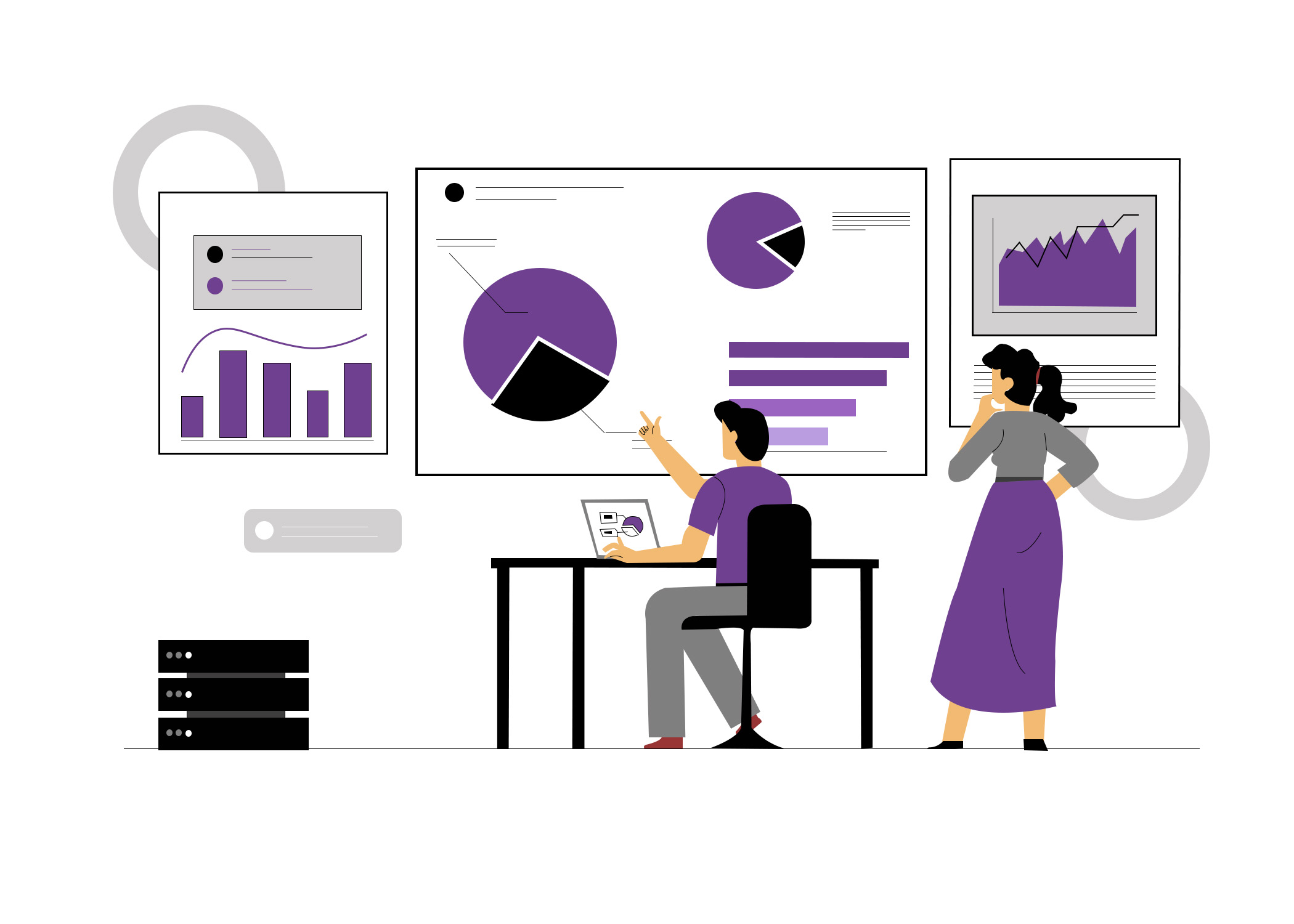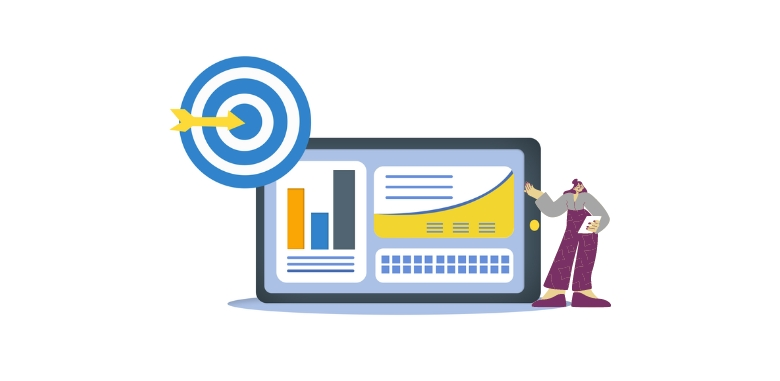

The Importance of Data-Driven Decision-Making for Small Businesses
As a small business owner or a small company in the present dynamic world, your business has an overwhelming amount of data at your fingertips, poised to be harnessed for substantial benefits. By deciphering the insights hidden within the data, your organization can make data-driven decisions
These decisions will help your company to unveil opportunities, streamline operations, and gain a comprehensive understanding of customer preferences and market trends. Data-driven decision-making utilizes insights derived from various sources such as numerical analysis, historical customer data, churn rates, purchase behavior, and more. It enhances decision-making by reducing uncertainty.
With access to concrete data, businesses gain the ability to foresee potential outcomes more accurately. Furthermore, data-driven decision making encourages a sense of transparency, as the reasoning behind the choices becomes evident to all stakeholders.
Get a clear experimental information of Data Analytics in Cross-Selling and Upselling.
How Business Analytics Can Help Small Business Make Better Decision:
Data-driven means making decisions based on data and evidence, rather than on intuition or gut feelings. In the past, SMEs often made decisions based on gut instinct or intuition. However, in today’s data-driven world, this is no longer a viable option. SMEs that want to succeed need to make decisions based on data.
Consider this, Customer Lifetime Value (CLV) is an integral part of business analytics. Through CLV you can forecast the value a customer will bring to your business. By analyzing past buying behaviors, engagement levels, and preferences of customers, business analytics can accurately estimate the potential revenue a customer will generate throughout their journey with your brand.
Here are some of the key roles that business analytics can play in small business data informed decision making:
Identifying customer trends and patterns:
Business analytics can provide information like, how to improve customer targeting, which new product to develop based on public demand or trends, optimize marketing campaigns to attract new/old customers etc.
Improving operational efficiency:
Business analytics can be used to identify areas where costs can be reduced or efficiencies can be gained. This can lead to lower operating costs, which can improve profitability and also help to negotiate better deals with suppliers.
Making better strategic decisions:
Business analytics can be used to make better strategic decisions, such as where to open new stores, what products to invest in, and how to allocate resources.
Furthermore, By performing customer segmentation and making groups with similar needs and interests, businesses can create a more efficient and inviting layout for their stores. For example, products that are often purchased together can be kept together.
Enhancing decision-making:
Business analytics can help businesses make better decisions for example, a business can track its own costs and the costs of its competitors. They can determine the lowest possible price that the business can offer while still making a profit. By offering lower prices than competitors, the business can attract new customers and increase market share.
The Data-Driven Decision-Making Process:
The data-driven decision-making process lies at the heart of modern business strategies, revolutionizing how organizations approach complex challenges and seize opportunities. Let’s study the steps in the decision making process to transform raw data into insightful choices:
Data Collection:
This initial stage involves gathering relevant information, such as sales figures, customer preferences, market research and operational metrics.
Data Preprocessing:
Once you have the collected data, it is optimal to clean it i.e. removing anomalies, null values, irrelevant data etc. This is important to ensure that the data is accurate and reliable.
Data Analysis:
With data, the analytical process comes into play. You investigate the data to uncover underlying patterns and connections.
Insight Generation:
As patterns emerge, they unveil insights with the potential to shape decisions. This step enables us to uncover valuable knowledge, guiding the course of action with newfound wisdom.
Decision Formulation:
With these new insights, you navigate the crossroads of decision-making. Much like a strategist, you select the path that aligns best with your objectives.
Action Implementation:
The final step involves translating your chosen decision into real-world action. This is where theory transforms into practice, and strategic planning meets execution.
Fundamentally, this process acts as a bridge to fill the gap between data and strategy, enhancing the precision and effectiveness of decision-making endeavors.

How to get started with Business Analytics:
Don’t try to do too much too soon. Start by collecting data on a few key metrics, such as sales, costs, and customer satisfaction. Once you have a good understanding of this data, you can start to expand your analysis.
There are a variety of tools and technologies available to help SMEs get started with data analytics. Some of the most popular tools include:
-
- Spreadsheets: Spreadsheets are a simple and affordable way to collect and analyze data. However, they can be limited in their capabilities.
-
- Business intelligence (BI) software: BI software is more powerful than spreadsheets and can be used to analyze larger datasets. However, it can be more expensive.
-
- Data mining software: Data mining software is used to identify patterns and trends in data. It can be used to make predictions about future behavior.
-
- Cloud-based analytics platforms: Cloud-based analytics platforms are a good option for SMEs that do not have the resources to invest in their own data analytics infrastructure.
The right tools and technologies for your SME will depend on the size of your business, the amount of data you need to collect and analyze, and your budget.
The Challenges of Data-Driven Decision Making for SMEs:
There are a number of challenges that SMEs face when it comes to data-driven decision making. These challenges include:
-
- Cost: Data analytics might seem expensive, especially for small businesses.
-
- Skills: SMEs may not have the skills or resources to collect, analyze, and interpret data.
-
- Culture: SMEs may not have a culture that is conducive to data-driven decision making.
-
- Data quality: The quality of the data can impact the accuracy of the insights.
-
- Timeliness: Data that is not timely may not be useful for making decisions.
How to Overcome the Challenges of Data-Driven Decision Making:
Small and medium-sized enterprises (SMEs) can benefit greatly from business analytics, but they often face challenges in customizing and implementing these solutions. Here are some tips for customizing business analytics for SMEs:

Start with the basics:
Before you can customize business analytics for your SME, you need to understand the basics of data collection, analysis, and visualization. There are many resources available to help you learn about these topics, such as online courses, books, and articles.
Identify your goals:
Once you understand the basics, you need to identify your goals for business analytics by defining data. What do you want to achieve with business analytics? Do you want to improve customer service, increase sales, or reduce costs? Once you know your goals, you can start to customize your analytics solution to meet those needs.
Choose the right tools:
There are many different business analytics tools available, and not all of them are created equal. Some tools are designed for large enterprises, while others are more suited to SMEs. It’s important to choose a tool that is within your budget and that can meet your specific needs.
Get help from experts:
If you’re not sure how to customize business analytics for your SME, you may want to get help from experts. There are many consulting firms that specialize in helping SMEs with business analytics. These firms can help you with everything from data collection and analysis to visualization and reporting.
Conclusion:
The journey revealed in “Data-Driven Decision Making with Business Analytics for SMEs” illustrates how this approach transforms uncertainties into opportunities and empowers SMEs to make precise, forward-looking choices. If you’re an SME that wants to stay ahead of the competition, you need to start making data-driven decisions. By using company’s data or business to make a decision, you can gain a competitive advantage, improve your operations, and make better strategic decisions.
Author
Team Solutyics is a dynamic group of Analytics and AI specialists who bring together a rich mix of expertise. Their combined insights ensure that readers gain a deeper understanding of practical applications of Analytics and AI.
